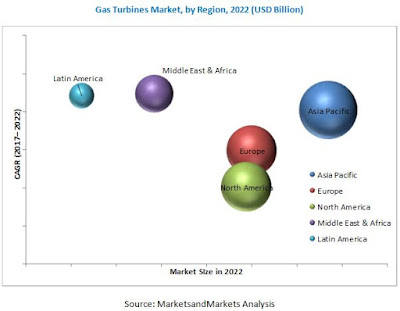According to
the new market research report "Well Casing & Cementing Market
by Type (Casing, Cementing), Service (Casing pipe, equipment & services,
Cementing equipment & services), Operation (Primary, Remedial), Application
(Onshore, Offshore), Well, and Region – Global Forecast to 2024", published by MarketsandMarkets™, the Well Casing & Cementing Market is
projected to reach USD 11.7 billion by 2024 from an estimated USD 9.2 billion
in 2019, at a CAGR of 5.0% during the forecast period. Increasing drilling
activities along with shale developments in North America, Asia Pacific, and
some parts of South & Central America are the driving factors for the Well
Casing & Cementing Market, globally. The well completion procedure involves
well casing & cementing as primary operations, which are directly affected
by the rising exploration & production activities.
The cementing segment is expected to be the fastest
growing Well Casing & Cementing Market, by type, during the forecast
period.
The cementing
segment of the Well Casing & Cementing Market is estimated to grow at the
fastest rate during the forecast period. This is mainly because the cost of
cementing operations is lower compared to the casing activities. Moreover, the
process of well cementing is challenging as it requires a more technical
skillset, thus demanding appropriate equipment and manual workforce. The
cementing related equipment are costlier, although the volume used is less.
Additionally, the cementing services do not have any alternative, unlike
casing, where liner systems can be used as a substitute. Such factors propel
the growth of cementing operations in the Well Casing & Cementing Market.
Browse and in-depth TOC on “Well
Casing & Cementing Market”
134 - Tables
55 - Figures
197 - Pages
Ask for PDF Brochure:
The primary
cementing operation segment is expected to dominate the Well Casing &
Cementing Market, by operation type, during the forecast period.
Primary cementing is the initial method undertaken to cement the casings
and fit the equipment, giving tensile strength to the well. According to industry
experts, primary cementing is a widely accepted practice, globally. The other
cementing processes, which include remedial cementing and stage cementing, are
undertaken only when primary cementing fails. Thus, in order to save capital
and operational expenditures, primary cementing is done. Moreover, the
increased horizontal drilling activities have provided market opportunities for
primary cementing.
North
America: The largest Well Casing & Cementing Market.
In this report, the Well Casing & Cementing Market has been analyzed
with respect to 6 regions, namely, North America, South & Central America,
Europe, Asia Pacific, Middle East, and Africa. According to the IEA, the US is
determined to become the net exporter of energy by 2020; and to fulfill this
objective, the oil production is being increased across the nation. Moreover,
the US retained its position as a top oil producer in 2018, due to the shale
revolution.
Speak to Analyst:
To enable an in-depth understanding of the competitive landscape, the
report includes the profiles of some of the top players in the Well Casing
& Cementing Market.
Some of the key players are Schlumberger (US), Halliburton (US), NOV
(US), Weatherford (US), and BHGE (US). The leading players are adopting various
strategies to increase their share in the Well Casing & Cementing Market.
Contracts & agreements has been a widely adopted strategy by the major
players in the Well Casing & Cementing Market.
